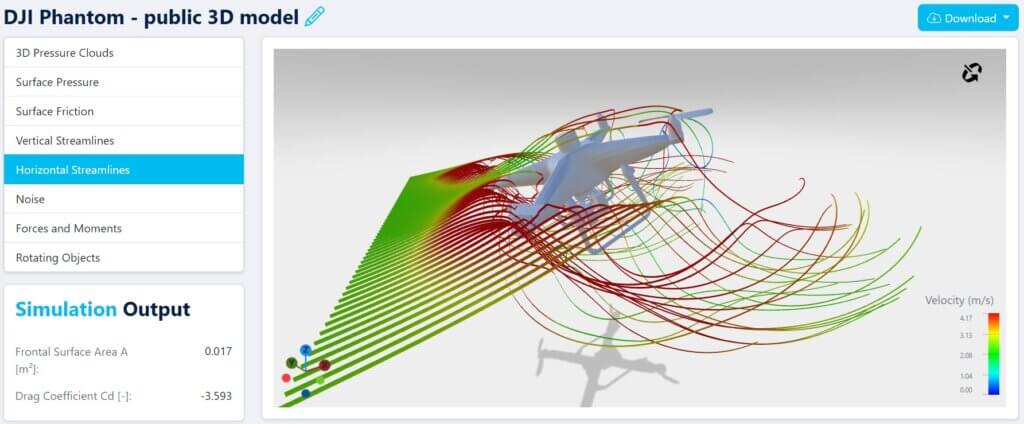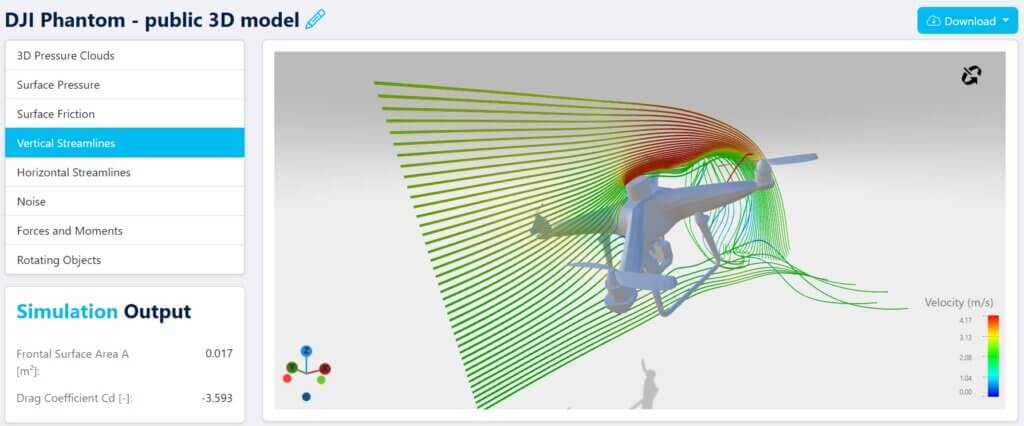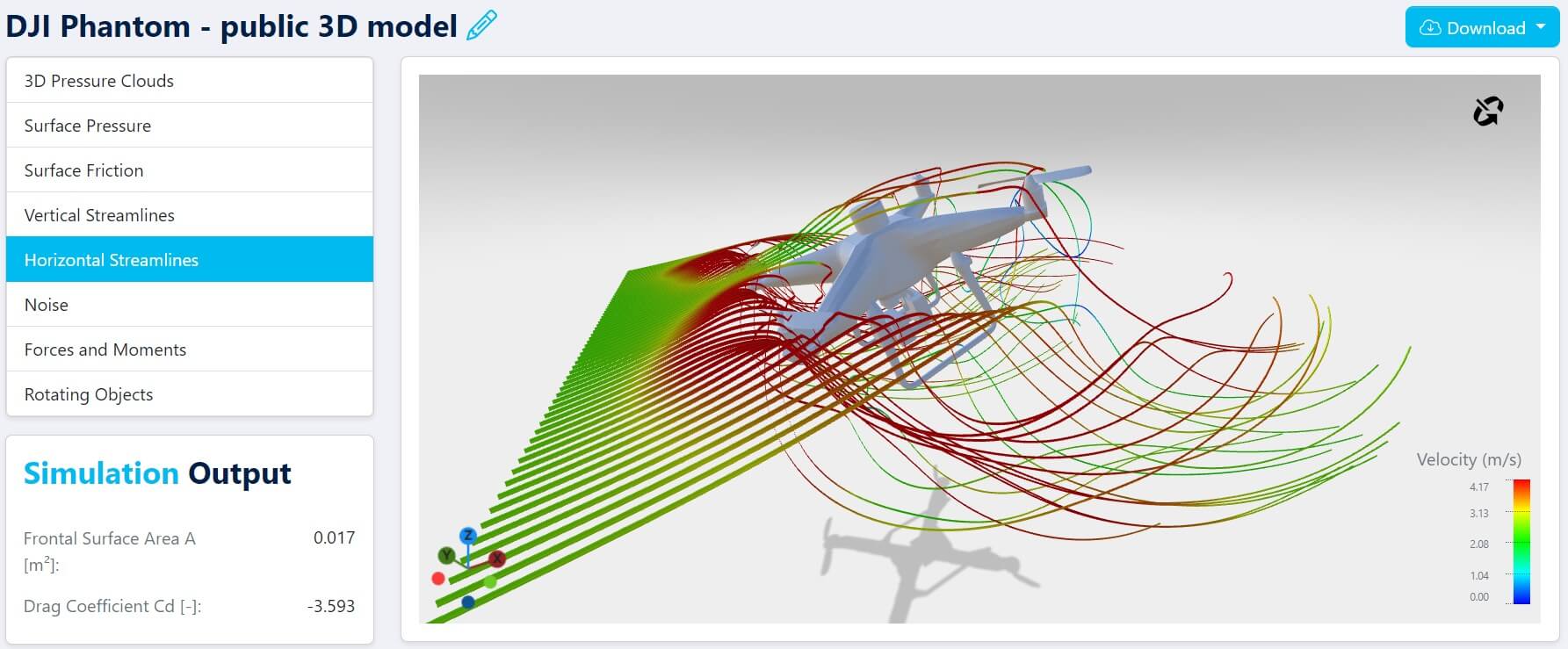At the dawn of the aviation age, trailblazers like the Wright brothers grappled with the almost unlimited possibilities presented by the potential of flying machines, while working within the strict constraints of materials and manufacturing techniques that would be considered primitive by modern standards. Aviation pioneers in the 21st century might sympathize with their forebears. While modern technology offers the means to make nearly any shape from countless advanced materials, the almost unbound possibility raises problems of its own.

Being able to go back to a clean sheet brings tremendous potential for innovation, but it also presents a fundamental conundrum: where to start?
Streamlining
A small company in Belgium is aiming to help narrow things down with a fresh approach to the complex field of computational fluid dynamics (CFD) — the science of calculating how objects interact with a fluid medium, such as the air. Christened AirShaper, the company now has clients among some of the most recognizable names in the eVTOL industry, as well as having worked with well-established names in aerospace, too.
The idea behind AirShaper originated with mechanical engineer Wouter Remmerie – now CEO of the company – while he was tackling a personal project aimed at designing a car to use airflow to generate steering forces.
“I wanted to validate the idea, and so I needed to run simulations,” explained Remmerie.
However, he found a single simulation could cost as much as two to three thousand euros (approximately US$2,100 to $3,200). The high price was largely due to the complexity of the process of preparing the 3D models for simulations. This involved preparing the simulation environment, optimizing the models, and then processing the raw simulation data into tangible output — such as graphical depictions of streamlines or lift coefficients. Remmerie wondered if this process could be automated — and set about finding out.
“I started it as an evening project,” he said. “And then I decided to pursue it full-time as I saw the potential for a product.”
That potential was born out of a paradox. Technologies like additive manufacture — sometimes referred to as 3D printing — have made it easier than ever to produce complex forms and shapes. But when the starting point is a blank slate, the costs can get out of hand before the first concept has even made it off the digital drawing board.
A large proportion of these costs were spent optimizing the input data before any simulations were even carried out.
Computerized 3D models must be converted into structures that the complex CFD software can understand, and because of the complexity of modelling airflow, they then have to be optimized so the areas that will deliver the most insight are represented in high resolution, while simpler regions can be rendered in much less detail to keep the computing and financial budgets under control.
“None of these processes add value,” said Remmerie. “The only things that add value are understanding the results and improving the design.”
Having kicked off his AirShaper project in 2017, Remmerie set about automating this process, and with the help of some private and government funding, launched the prototype in 2018. Now, the company offers a fully-fledged product that can be accessed simply by creating an account on its website and picking the level of analysis that fits the customer’s complexity and cost requirements. It is a model that has proven popular both with newcomers and more established names, from flying car startup PAL-V to General Electric. With the software being cloud-based, AirShaper was able to offer this in a ‘pay-per-simulation’ model rather than expensive software licenses.
“We now offer exactly what I wanted when I was designing the car,” said Remmerie. “An easy-to-use tool to show: ‘Is it working or not?’ with a transparent one-off cost.”
Intelligent design
Creating that ease of use came with its own challenges. CFD is by definition an extremely complex undertaking involving a lot of advanced mathematics. Over-simplification of the product would harm its usefulness, whereas the problems of overcomplexity were the very drawbacks that AirShaper was trying to address. Furthermore, creating a CFD program from scratch would come with the attendant problem of proving its capabilities, which would again add costs that would have to be passed on to the end user.
The answer was to optimize everything about the CFD user experience, but retain the core software that would be used to compute the actual results.
“We use an open-source software environment called OpenFOAM, which has a great reputation and has been validated and accepted within the market,” said Remmerie. “Our automation ecosystem sits around that.”
While retaining the OpenFOAM core meant that the software would be able to produce industry-standard results at launch, there was still a lot of mathematical heavy lifting to do.
“We made a decision early on to work with .stl files [the same format used for 3D printing],” explained Remmerie. “The problem is that what looks like a sphere to a human, to the computer is just a large number of triangles.”

These files had the advantage of being easy for users to create using widely available computer aided design (CAD) software, but an entire system needed to be created to turn what was effectively a list of triangles into mathematical information such as radii and distances that the OpenFOAM core required. Even more computing wizardry was used to adapt the digital mesh around any 3D object that is imported into the software in a process called adaptive mesh refinement.
These automations provided other benefits. Being able to quickly provide aerodynamic feedback enabled a rapid round-trip for virtual prototype iteration.
However, it wasn’t long before AirShaper was busy optimizing this process, too, by having its software automatically optimize the shape based on the predicted aerodynamic benefits of each change, and the user’s requirements.
An early beneficiary of this process was major survey drone manufacturer AgEagle, who used AirShaper to improve the lift-to-drag ratio of one of its drones by over 30 percent.
“Airplanes are already very streamlined, but highly sensitive to changes, so the problem is how to improve on a very smooth and delicate shape like an airfoil,” explained Remmerie. “Our answer is to have the software automatically morph a 3D object based on the user’s requirements.”
With the user controlling the optimization using a simple set of tools, the resulting shape can be quickly exported to the customer’s CAD environment.
And as well as the optimized model, the AirShaper system produces a pre-formatted document visualizing the results of the analysis, as well as allowing the complete dataset to be downloaded for those that may want to run their own analysis on the raw numbers.
Design revolution
And of course, it’s not just winglets and airfoils that benefit. A great deal of attention is paid to the design of propellers and rotors, particularly in the eVTOL industry, where the traditional boundaries between the two are becoming less and less well defined.
Here again, AirShaper has a trick up its sleeve that makes the process of getting the component through the analysis process much less painful.

“Setting up a propeller is prone to errors,” said Remmerie. “You must specify the axis and direction of rotation, and an appropriately-sized domain in which you add mathematical equations for things such as centripetal and Coriolis forces.”
Driven in part by customer demand, AirShaper took the experience it had gained developing a tool to automatically detect car wheels and applied it to create a propeller detection capability. This made the software able to automatically detect a shape as being a propeller, and discern the axis of rotation, with just one click.
“For individual optimization of propellers, you need to apply much more computational power to just a single propeller,” said Remmerie. “And that’s why we branched out with the propeller tool.”
With all this capability only a few clicks away, it’s little surprise that AirShaper has already attracted considerable attention from a variety of industries ranging from air vehicle manufacturers to elite sports teams and athletes. The appeal of uploading easily produced and accessible design files to a browser and letting a server somewhere crunch the numbers is easy to understand. But Remmerie sees AirShaper as supporting rather than challenging the established CFD market.
“AirShaper positions itself upstream in the design process,” he explained. “We aren’t saying forget about your other software, and certainly not to forget wind tunnel testing, we are saying use us as early and for as long as possible.”
Whether it’s a completely new part or the basis of a modification, almost anything destined for an airframe is likely to begin its life on a computer. And as the tools and technology to make ever more complex shapes from lightweight materials continue to advance, the advantage of relying on ‘tried and tested’ solutions could soon be ceded to those able to rapidly find a better way, even if they’re starting from a blank slate.
Shaping the future
AirShaper has developed a tool specifically designed to get aerodynamics into the design process early enough to avoid difficult redesign efforts later on.
Moreover, it gives companies who may be finding their way through aeronautical problems for the first time the confidence to go ahead, and the financial room to develop a solution that they can have faith in when they present it for much more expensive analysis and testing.
“The conventional approach was that you buy a hugely expensive software license which would need an experienced person to operate it, so it was a massive threshold to get into aerodynamics,” explained Remmerie. “We have automated that process, so if our customers need to spend more, for example on wind tunnel testing, they know they are going to get good value.”









